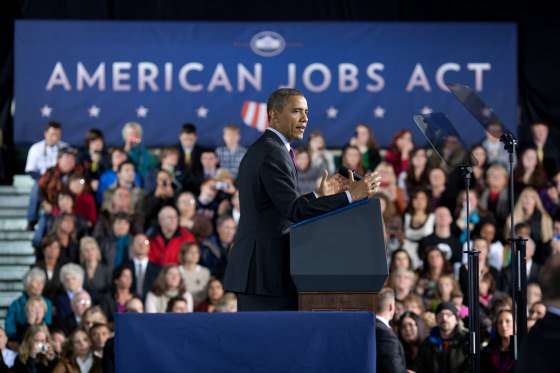Obamacare, Work Killer

Obamacare isn't a job killer, at least not according to the Congressional Budget Office (CBO). But it is a work killer.
That might sound like a meaningless distinction, but there is a difference. Obamacare, according to the CBO, isn't going to cause employers to terminate millions of jobs. But it is projected to cause millions of people—about 2 million in 2017, and 2.5 million by 2024—to quit working, or work fewer hours than they otherwise would have.
The White House has declard that this is a good thing. Thanks to Obamacare, the administration said in a statement last week, "individuals will be empowered to make choices about their own lives and livelihoods, like retiring on time rather than working into their elderly years or choosing to spend more time with their families." People will "no longer be trapped in a job" just to get coverage. Obamacare will allow people to "pursue their dreams."
What might that look like in practice? The bulk of the reduction in the labor force isn't expected to occur until 2017, but with the help of Families USA, a health care advocacy group that supports Obamacare, The Washington Post has already found of two people who have quit working because the law: a 56 year-old Indiana woman who left a payroll administration job when her duties changed and now babysits her granddaughter full time, and a 44 year-old Texas man who quit an $88,000 job in order "to help his nephew, a cancer survivor, start a social media and video-gaming site for other teens with the disease." It's an unpaid position.
Does these examples make the case for Obamacare or against it? Here are two people who, absent the existence of the law, would be productive workers contributing to the economy. Thanks to Obamacare, however, they are not.
Something like that is expected on a larger scale, although the impact won't be distributed evenly across the income spectrum.
That's because the effect is expected to be concentrated not amongst the office-dwelling upper-middle class, but down the rungs of the income ladder, within the cohort of relatively low-wage, working-class Americans who are already less attached to the labor force. (This is why the CBO projects that even though labor force participation will be two points lower than it otherwise would have been, total compensation will only be reduced by one point.)
The reason the effect is largest amongst the bottom of the income spectrum is that the law's insurance subsidies grow as one makes less money. Sliding-scale subsidies reduce marginal returns to work, because earning more money has the simultaneous effect of reducing the value of the subsidy. (Medicaid, for those at the very bottom of the income scale, has also been shown to discourage work.) It's basically a tax on work at the lower end of the income spectrum.
As the CBO explains, "Subsidies that help lower-income people purchase an expensive product like health insurance must be relatively large to encourage a significant proportion of eligible people to enroll. If those subsidies are phased out with rising income in order to limit their total costs, the phaseout effectively raises people's marginal tax rates (the tax rates applying to their last dollar of income), thus discouraging work."
The simplest way of saying it is that Obamacare makes it less painful to not work, especially for those who already don't make much money. The result is that over the next decade, millions of people will either work less or not at all. In economic terms, it's the same effect as much of the transfer spending contained in the big fiscal stimulus package passed during President Obama's first year in office.
Supporters of Obamacare have pointed out that this is true of all means-tested welfare programs, including some of the conservative health reform proposals that tie financial assistance to income levels.
That's true, but it doesn't mean that we should simply sigh and move on. Government transfer programs can be revamped and remodeled with work in mind. In 2006, when Bill Clinton revisited the welfare reform he'd passed a as president decade earlier, he declared it a success—because it encouraged more than a million people to take up work, and to move beyond government assistance.
And yet there is a real tension between work and welfare, a balance between employment and aid. That balance has tipped toward the latter in recent years, as various parts of the safety net have expanded to catch those people harmed by the recession. In the process, as high unemployment has persisted and millions have dropped out of the market for work entirely, pushing the labor force participation down to its lowest point since the 1970s, the political conversation has naturally turned to the question of how to create jobs. So far, we've found frustratingly few good answers. Which suggests that policymakers concerned about joblessness might want to consider looking more closely at finding ways to encourage work—or at the very least, to minimize the ways in which discourage it.
